Authentic Cantucci Toscani Recipe
Treat yourself to easy cantucci Toscani and their smaller variation, cantuccini Toscani—classic Italian almond biscuits made authentically with roasted almonds. These delectable cookies, optionally flavored with vanilla and citrus zest, are perfect companions for your morning coffee or afternoon tea, and they make great holiday gifts.
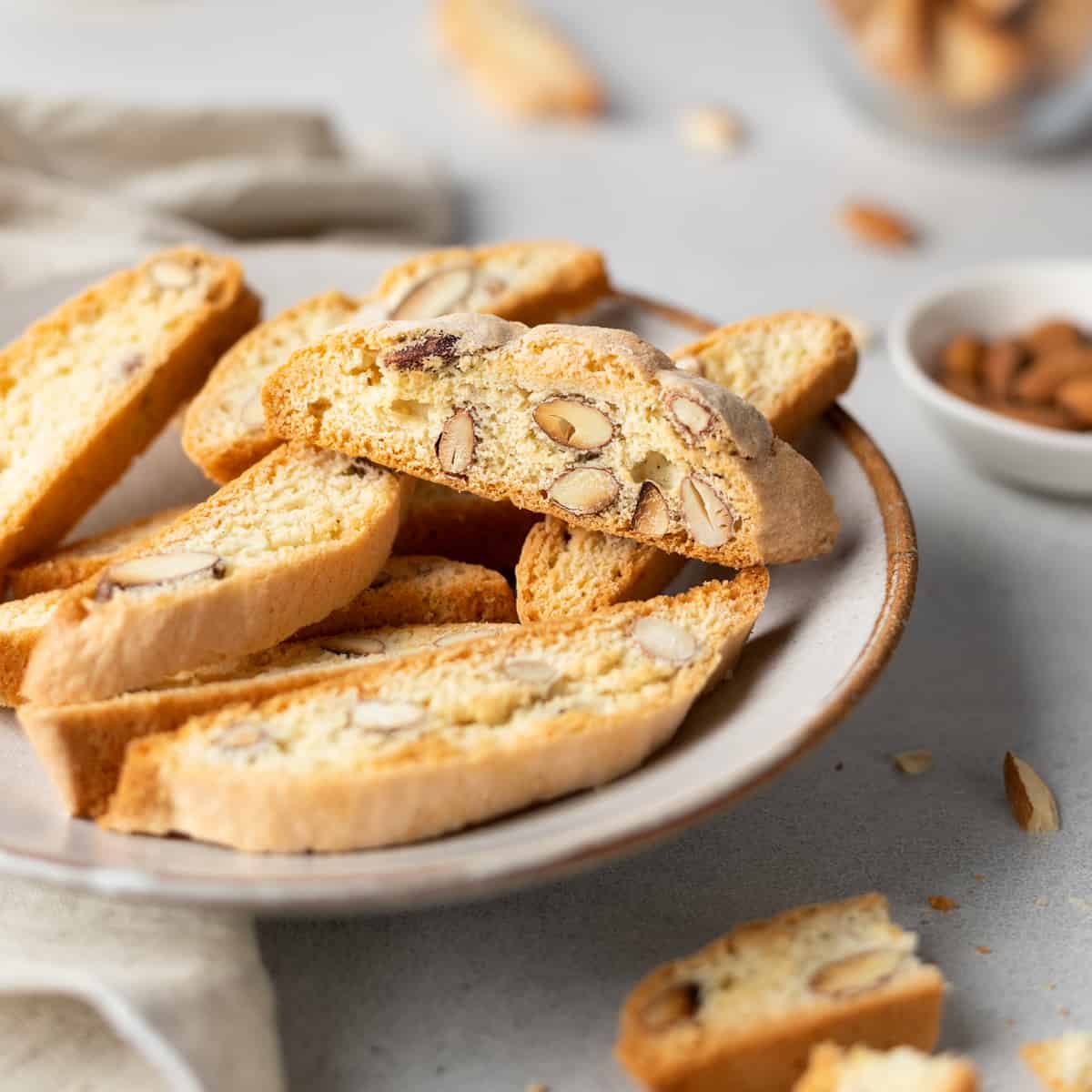
These crispy almond biscotti are a quintessential part of Tuscan cuisine, widely recognized as one of Italy’s most famous cookies. While Italians traditionally enjoy them dunked in sweet dessert wine, such as Vin Santo, these cantucci biscuits can also be savored with sparkling wine or liqueurs.
Produced in the 16th century in the Tuscan city of Prato, the original cantucci were simple in form. However, bakers in the 19th century enhanced them with almonds, butter, and leavening agents to prolong shelf life and increase flavor complexity.
If you’re planning a trip to Italy, don’t miss out on sampling traditional cantucci Toscani from renowned local bakers like Fratelli Lunardi.
Cantucci vs. Biscotti
It’s interesting to note that many outside of Italy believe that the term “biscotti” refers exclusively to a specific type of cookie. In reality, biscotti is a generic term encompassing a variety of Italian cookies and biscuits, with cantucci being just one particular type. Hence, it’s common to hear cantucci biscuits being referred to as “biscotti cantuccini” or “biscotti a cantucci.”
The word biscotti is derived from the Latin terms bis (twice) and cottum (cooked), referring to the fact that these cookies are twice-baked—hence, the name. In singular form, “biscotto” is the correct term to use.
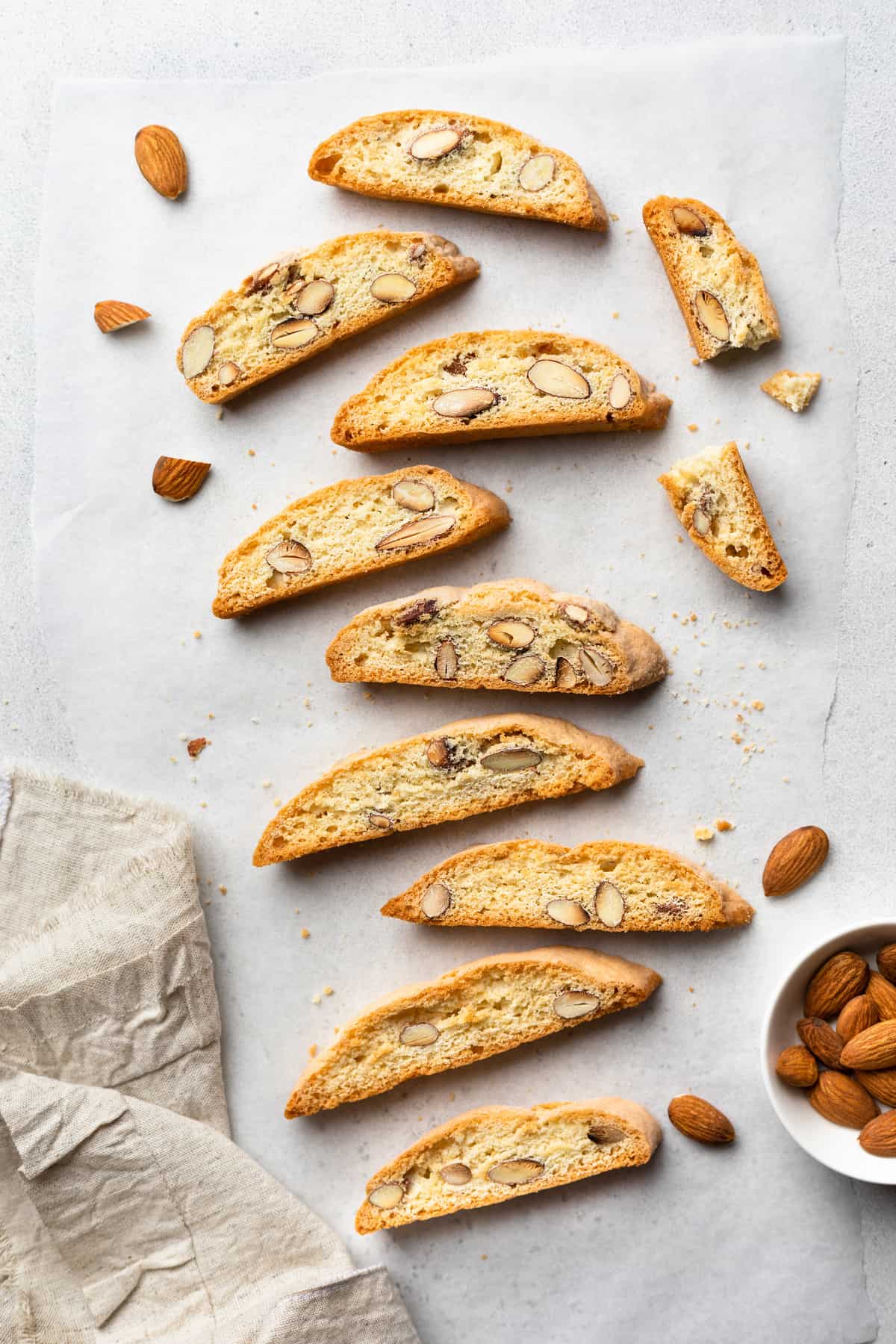
Cantucci vs Cantuccini
The singular term “cantuccio” comes from the Latin word cantellus, which means “a piece or slice.” The plural form, “cantuccini,” translates to “little cantucci.” In essence, cantucci are the regular-sized version, while cantuccini are their bite-sized counterparts, making them perfect for a smaller treat or snack.
Why You Should Try This Recipe
- This is an authentic cantucci recipe that uses only five ingredients, with optional flavorings to enhance taste.
- Tuscan biscotti, or Prato biscuits, provide an excellent choice for breakfast or as a delightful accompaniment to coffee or tea.
- This straightforward cantucci recipe (cantucci ricetta) is fully customizable in terms of flavors and size—allowing you to create tiny versions called cantuccini.
- Thanks to their long shelf life, homemade biscotti are an ideal addition to holiday cookie boxes.
Ingredients
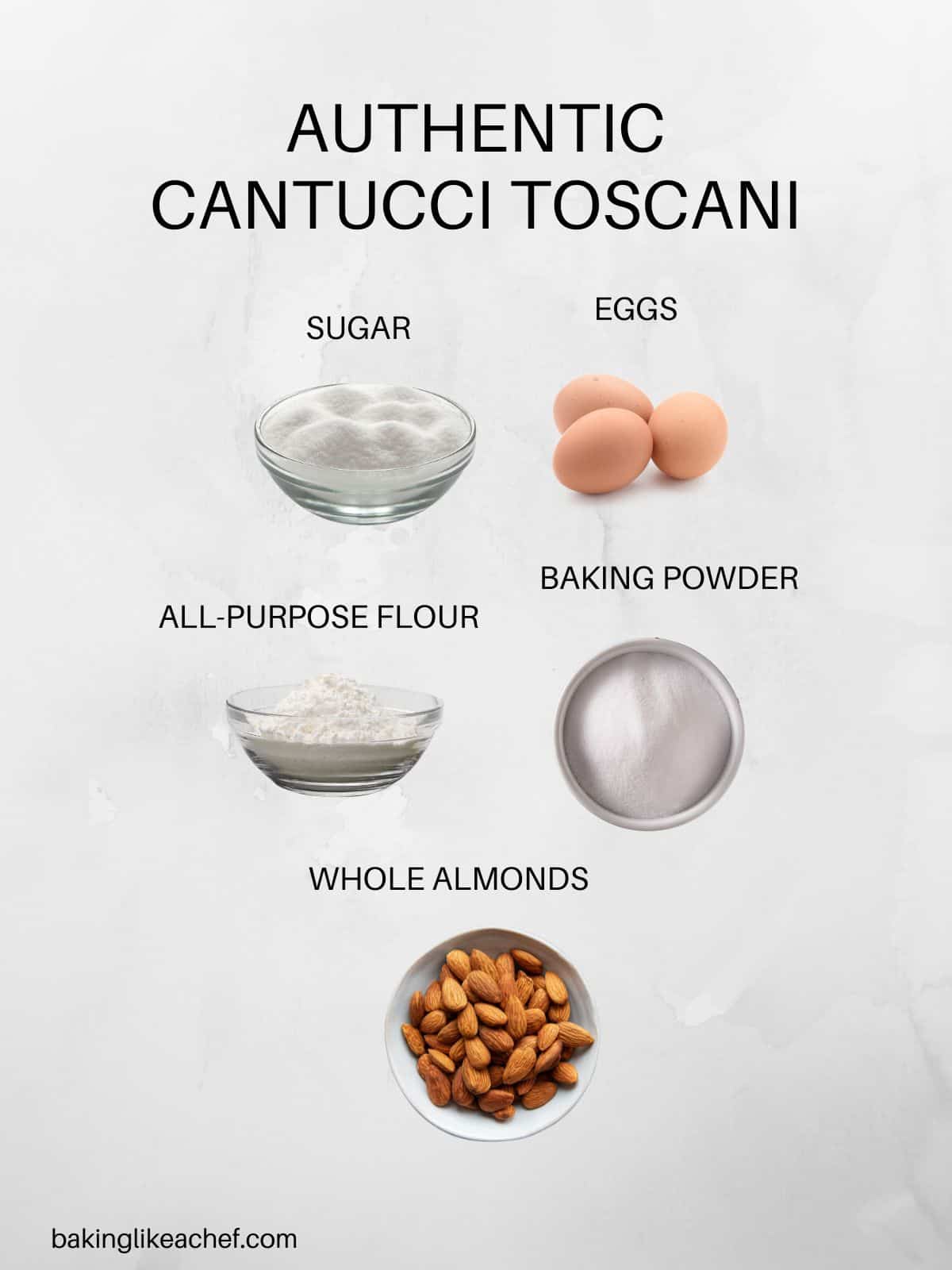
For ingredients and detailed instructions, refer to the recipe card below.
- Flour: While the traditional cantucci recipe calls for Italian 00 flour, all-purpose flour works well. Alternatively, wholemeal flour can be used for a more rustic flavor. For a gluten-free option, consider a 1:1 gluten-free baking blend or a mixture of rice flour and chestnut flour.
- Sugar: White sugar, granulated, or caster sugar will function interchangeably in this recipe.
- Eggs: You’ll need 2 large eggs at room temperature.
- Almonds: The recipe specifies whole roasted almonds with skin on. If you want to toast raw almonds yourself, simply place them in an oven preheated to 300°F (150°C) for about 15 minutes.
- Baking Powder: This acts as a leavening agent; moreover, an ingredient called ammoniaca per dolci (ammonium carbonate) is often used in authentic recipes to achieve a distinctive crunchiness and to extend shelf life.
- Flavoring: This is optional! This recipe combines vanilla extract with orange and lemon zest but can also include Tuscan dessert wine Vin Santo, rum, Grand Marnier, or even almond extract for a unique flair.
Recipe Variations
Due to the somewhat secretive nature of the original cantucci recipe, many delightful variations have emerged.
- Butter: Some versions incorporate butter, but traditional Toscani cantucci do not.
- Flavorings: Though the original cantucci recipe stays simple, you can experiment with various flavor combinations:
- Cantucci with hazelnuts: Substitute almonds with hazelnuts, pistachios, or pumpkin seeds for a different nutty profile.
- Cantucci with dried fruit: Intrigue your palate by incorporating candied citrus, raisins, cranberries, cherries, or even anise seeds.
- Chocolate cantucci: Consider adding mini chocolate chips for a sweet twist known as cantucci Benedetta Rossi.
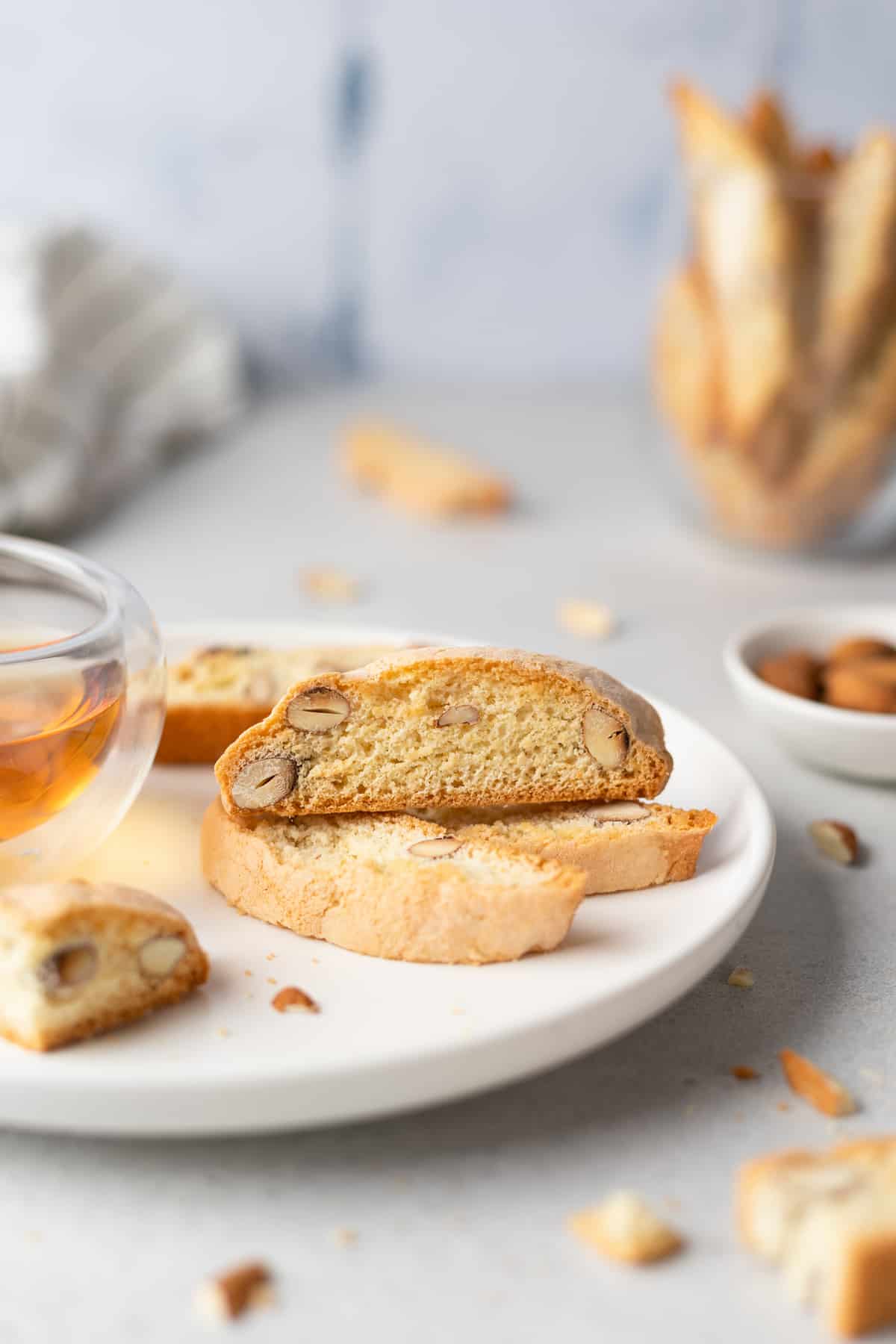
How to Make Cantucci
Preheat your oven to 355°F (180°C) and line a baking sheet with parchment paper. In a large bowl, combine the eggs, sugar, citrus zest, salt, and vanilla extract, mixing with a fork.
Add sifted dry ingredients (flour and baking powder) to the mixture and continue mixing first with a fork, then using your hands. Incorporate the whole almonds and knead well.
Transfer the dough to a lightly floured surface and divide it into two equal portions. Should the dough be sticky, you may add a bit more flour; however, be cautious not to add too much.
Pro tip: Use damp hands instead of flour to keep the dough from sticking too much.
Roll each portion into two logs while gently flattening them until approximately 1.5 inches (4 cm) wide. Space the logs apart on the parchment-lined baking sheet to prevent them from sticking together as they bake.
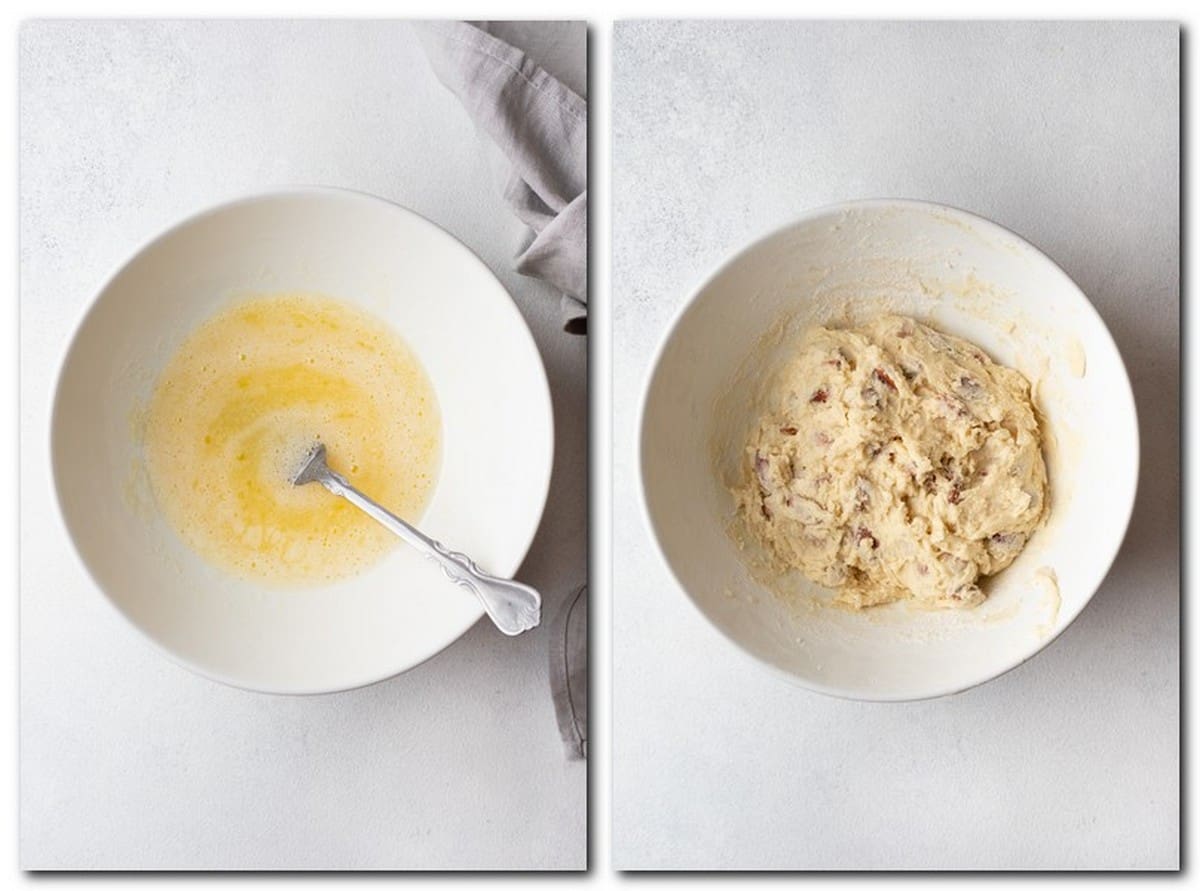
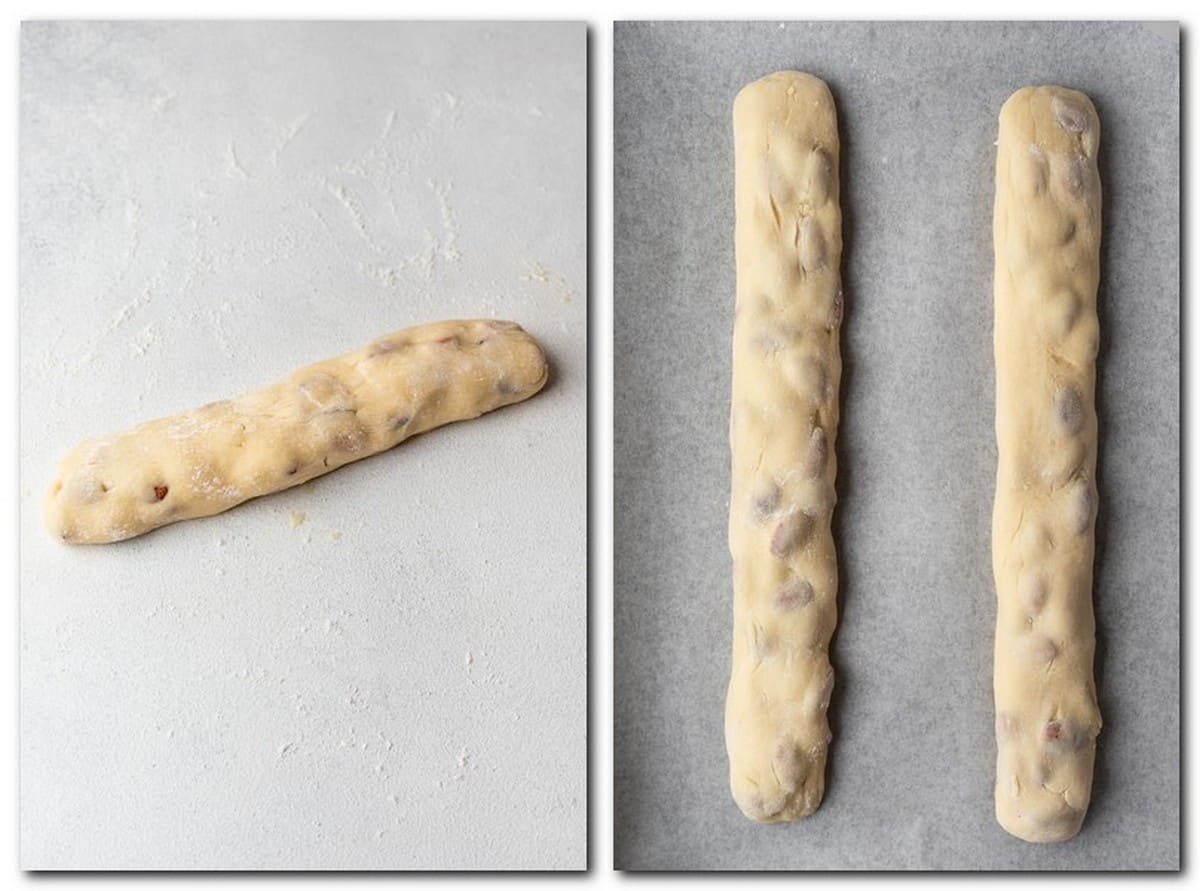
Bake the logs on the middle rack for about 18–20 minutes until they are golden. Remove them from the oven and let cool for about 5 minutes, then transfer to a cutting board.
Use a serrated knife to cut the hot logs diagonally into slices approximately ½ inch (1 to 1.5 cm) thick. Lay the slices cut-side up on the baking sheet.
Pro tip: A sawing motion works best. Cutting while the loaf is still warm helps achieve the best texture.
Return the slices to the oven and bake for another 4 minutes on one side, then turn them over to bake for an additional 4 minutes. Finally, cool the cantucci on a wire rack.
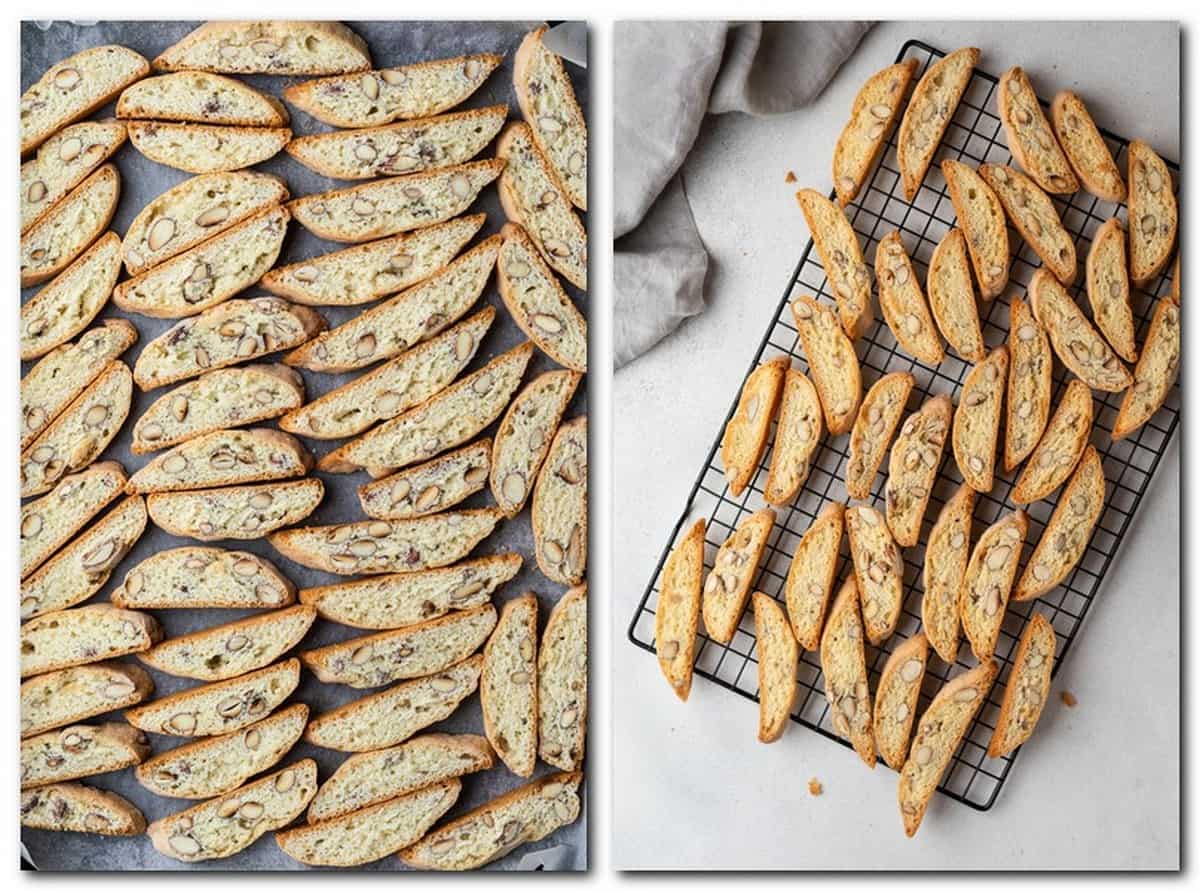
Expert Tips
- For a crunchier texture, extend the second baking time for the sliced cookies by 10-12 minutes. Flipping the cookies is not necessary during this process.
- If desired, brush the logs with beaten egg yolk before the first baking.
- For bite-sized cantuccini, roll your dough into several smaller logs, adjusting the baking time accordingly.
Storing and Freezing
To ensure freshness, store cantucci in a tightly sealed tin box or a cookie jar away from humidity; they can last up to 30 days. Avoid using plastic bags as they may cause the cookies to soften.
Can you freeze cantucci? Yes, you can freeze raw logs wrapped in plastic film and aluminum foil for up to a month. When ready to bake, thaw them in the fridge overnight before baking. Additionally, baked and cooled cookies can be frozen for up to 3 months in a freezer-safe bag.
Recipe FAQ
Cantucci is pronounced as kan-ˈtuch-chi.
Cantucci is a specific type of biscotti; biscotti is a general term for all Italian cookies and biscuits.
Yes! You can replace almonds with various nuts like pistachios, hazelnuts, or even dried fruit, candied citrus, and chocolate chips.
Traditionally, cantucci are served after dinner, dipped in Vin Santo or accompanied by sweet wines, sparkling wines, or liqueurs. They are also enjoyed for breakfast dipped in coffee, tea, or milk.
Cantucci can be stored in an airtight container for up to 30 days and can be frozen for up to three months when stored properly.

